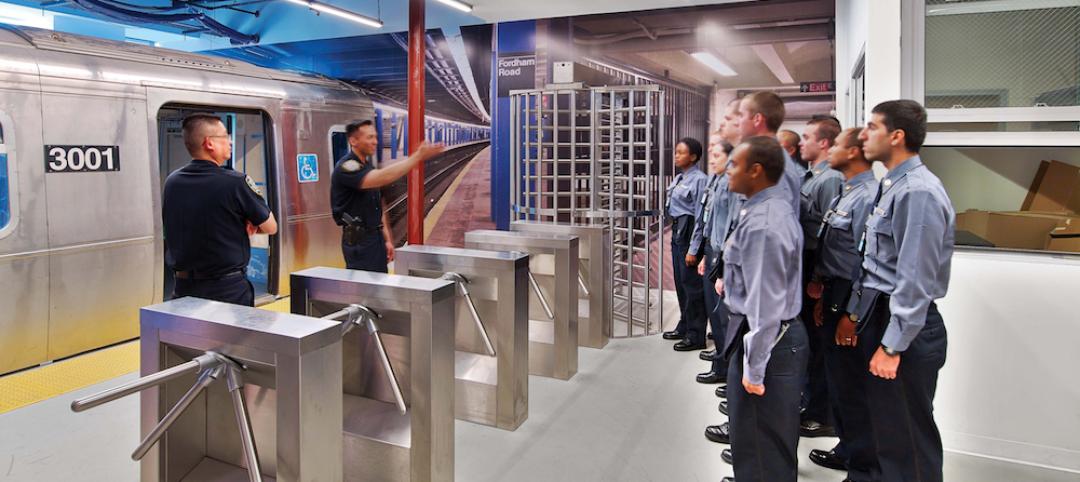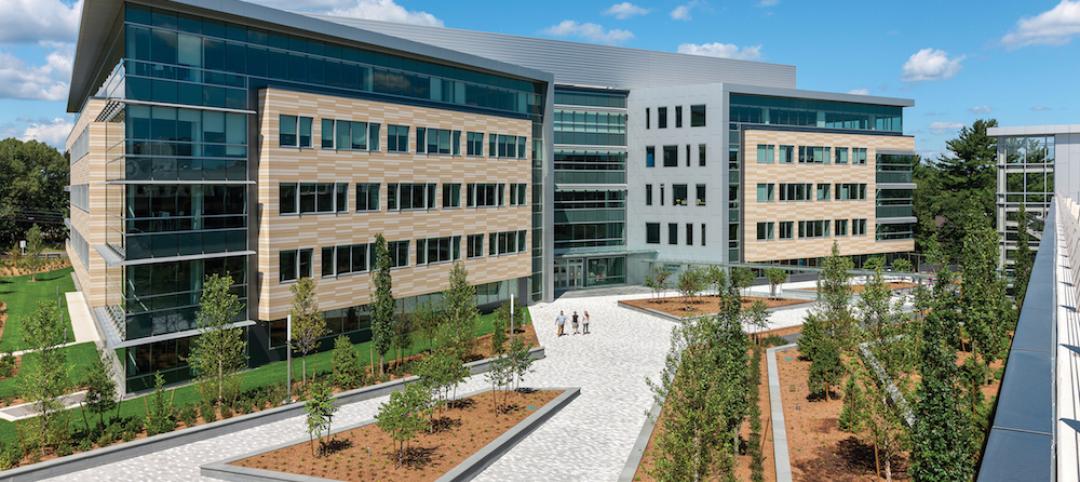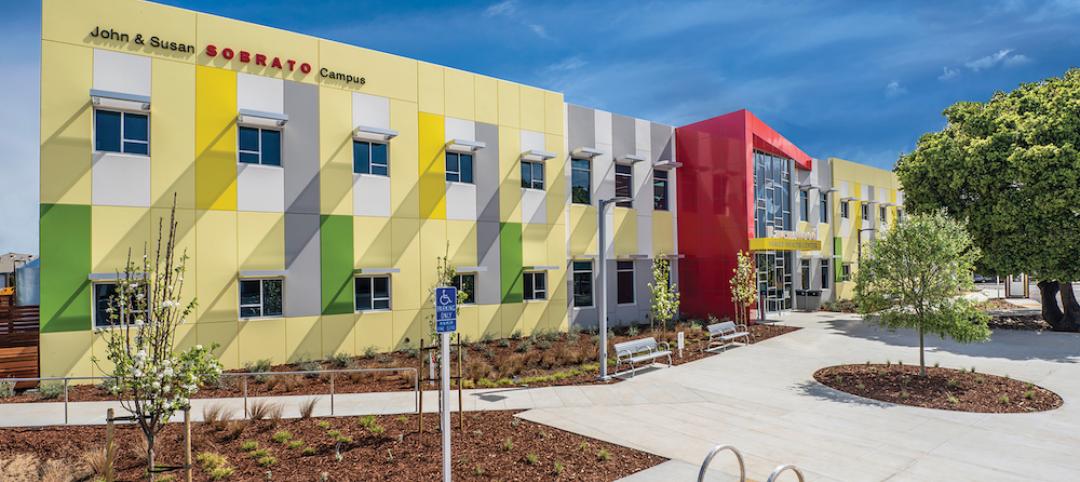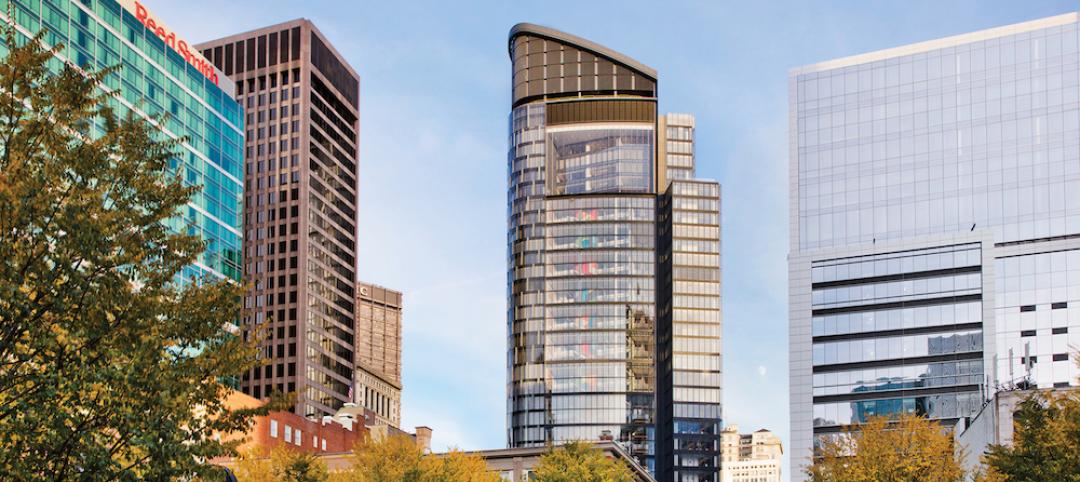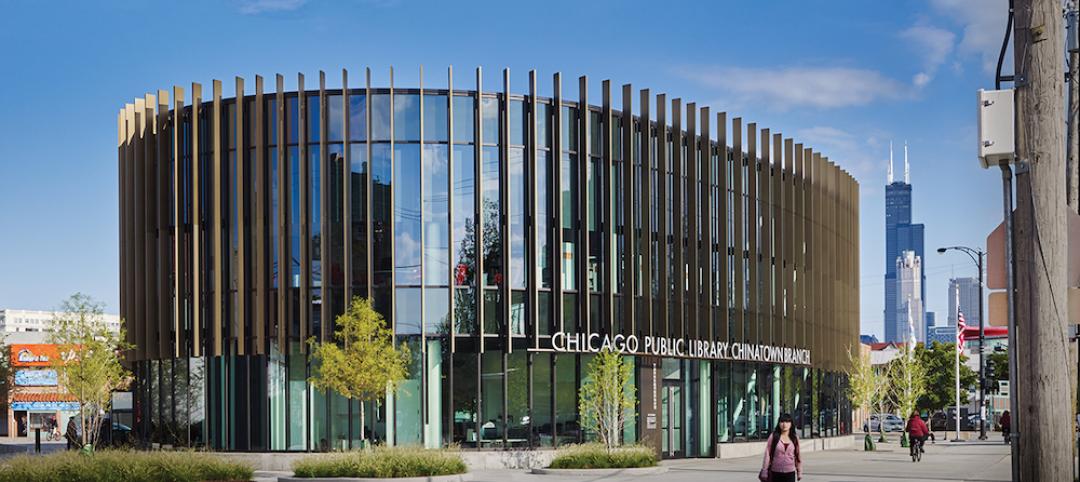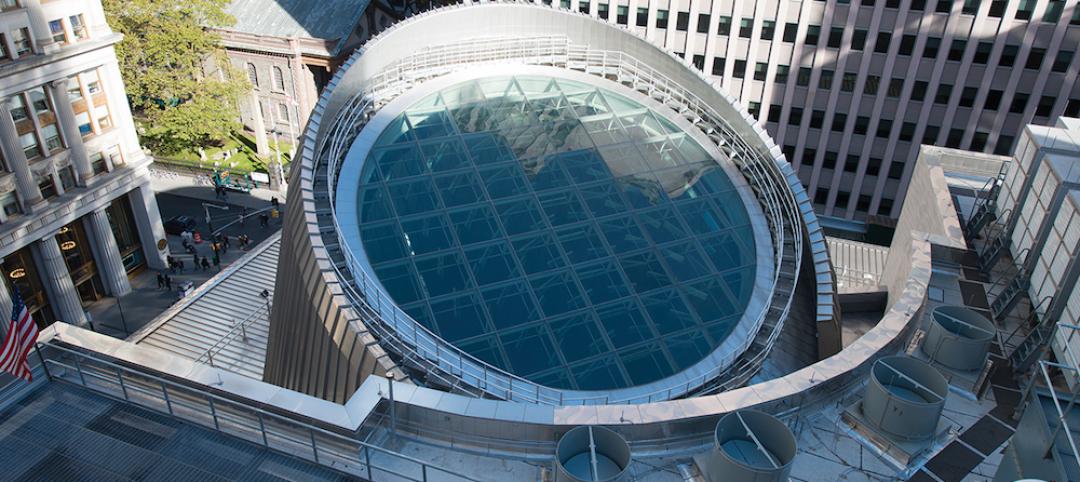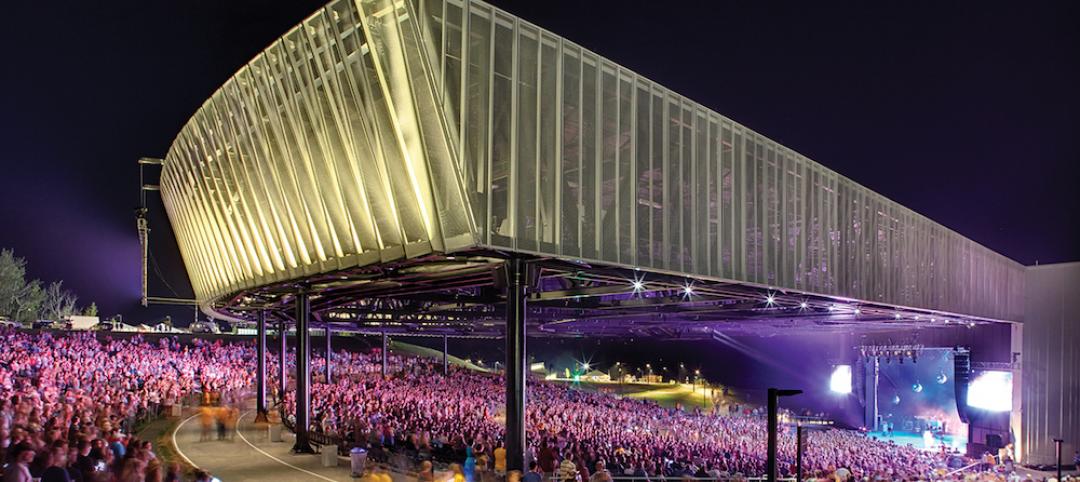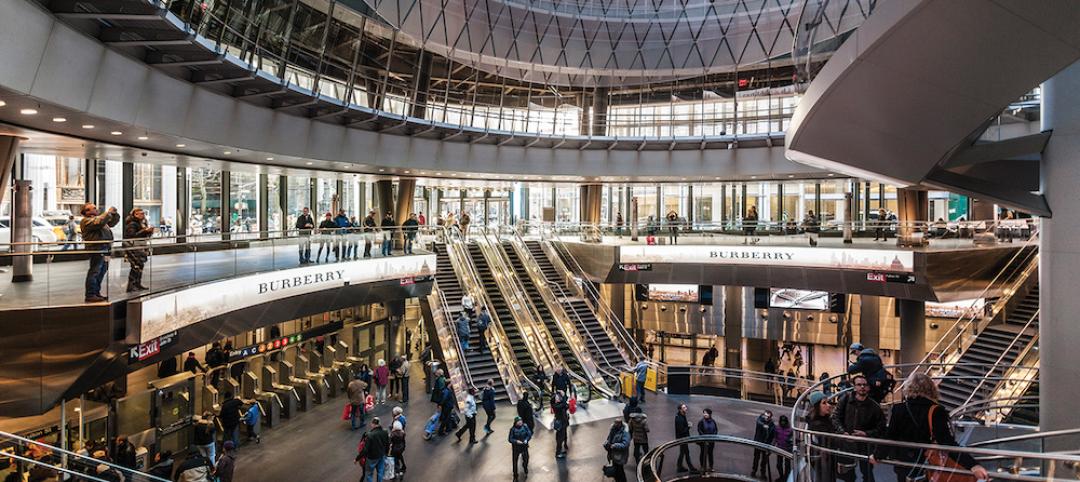Eight years ago, when the state of Iowa moved to replace its outdated women’s prison, Warden Patti Wachtendorf was explicit about her vision for the new facility. “I wanted a prison that didn’t look like the stereotypical prison,” she recently recalled. “I wanted it designed for women, not men.”
To Wachtendorf, a 37-year corrections veteran, that meant it had to have “lots of natural light” and “an atmosphere that would allow women to feel safe so they could work out the issues that had brought them to prison in the first place.” Of course, it had to be safe and secure for both offenders and staff; after all, some inmates were convicted murderers.
The 888-bed Iowa Correctional Institution for Women (ICIW), which opened in early 2017, is a far cry from the dark, damp, and dreary hellhole where the state’s female offenders were previously confined. The two-phase, $80 million project, designed by lead architect STV, resulted in the construction of five new buildings and the renovation of six old ones. The Mitchellville campus now houses:
— A “programs building” with a gymnasium, classrooms, vocational education areas, counseling suites, and a library with large windows for natural light.
— A new food services building with two daylit dining halls.
— A healthcare building with a hospice, assisted living facilities, a medical clinic, dental and optometry services, and a mental health unit.
The project team introduced several elements deemed important to female offenders. Showers and bathrooms were equipped with modesty screens and doors. A children’s play area and an outdoor visitor’s courtyard were installed. To avoid over-illumination, which can disturb inmates’ sleep and raise their anxiety level, STV designed the facility to allow the women to control the lighting in their cells and in dayrooms.
The cells were carefully planned. “The women like bunking two to a room, but they don’t want to climb into bunk beds,” said David Miles Ziskind, FAIA, NCARB, LEED AP BD+C, Chief Architect and Senior Vice President at STV. The designers configured the cells to put two beds on the floor and still provide room for comfort.
 A children's play area humanizes the atmosphere. © Brent Isenberger Photography.
A children's play area humanizes the atmosphere. © Brent Isenberger Photography.
STEPPING UP ON MENTAL HEALTH
The design and operation of the institution’s 76-bed Mental Health Unit may be its crowning achievement. At first the plan called for staff offices to be located in the center of the complex, away from the mental health area to the south. “Staff said no, no, no! We need to be right there on the unit!” said Tim Darr, Treatment Services Director.
The unit’s design is in line with the state’s goal of reducing the three-year recidivism rate from 30% to less than 20% in a decade. There are three levels of care—acute, subacute, and intensive outpatient. A team of specially trained corrections officers, two counselors, and a psychologist can move patients from one level to the next, often in quick transitions, based on behavior and treatment needs. “We’ve changed our way of thinking,” said Darr, a 17-year corrections’ veteran. “We’re helping them manage their problems, helping them live outside their cells, but without having to be housed with the stronger personalities in the general population.”
One intriguing way this is achieved is through the unit’s three “watch pods.” Each is a glass-enclosed area that surrounds several cells. “If we have an aggressive offender, we can put her in a watch pod without having to put her in her cell, and staff can keep an eye on her from behind the glass,” said Darr.
 Floor plan shows the organization of the mental health unit into acute, subacute, and step-down areas. Staff offices are integrated into the unit. Courtesy STV.
Floor plan shows the organization of the mental health unit into acute, subacute, and step-down areas. Staff offices are integrated into the unit. Courtesy STV.
THE PROOF OF THE PUDDING
In its brief existence the ICIW has become the talk of the corrections community. This year alone, corrections officers from six states have toured the facility, as have those from several foreign countries, most recently Bosnia.
But the truly important data point is the 66% decline in “critical incidents”—a disturbance where security has to be called in—in the new facility. “That’s very significant, especially since one-third of the incidents were attributed to a single offender,” said Jerome Greenfield, MD, Health Services Administrator, Iowa Department of Corrections and a Distinguished Fellow of the American Psychiatry Association. Greenfield credits the highly trained staff and the uplifting spirit of the new environment for the sharp drop in critical incidents.
See Also: Sweat equity marks landscaping effort
The Iowa Correctional Institution for Women is a textbook case of design having a positive impact on the people for whom the work was built. “There was one inmate who for 10 years in the old prison never let her family visit her, she was so ashamed of her environment,” Ziskind said. “Now they visit weekly, and she’s proud to see them. Think what that means to her as a human being.”
 The visitation lounge features a wood acoustical ceiling, comfortable furniture, and large windows for daylighting that look out onto the campus and visitation courtyard. © Brent Isenberger Photography.
The visitation lounge features a wood acoustical ceiling, comfortable furniture, and large windows for daylighting that look out onto the campus and visitation courtyard. © Brent Isenberger Photography.
Building Team — Submitting firm, lead architect STV Owner Iowa Department of Corrections Architecture consultants Design Alliance Inc., BBS Architects|Engineers SE Raker Rhodes Engineering CE Snyder & Associates MEP/FP BBS Architects|Engineers LEED/Sustainability consultant Shive-Hattery Electronic security systems design Tim Redden & Associates Landscape design Iowa State University GC Walsh Construction Company II LLC CM (phase 1) Heery International CM (phase 2) Samuels Group
General information – Size 324,354 sf Cost $80 million Construction time February 2011 to February 2017 Delivery method Design-bid-build
Return to the 2018 Building Team Awards Landing Page
Related Stories
Building Team Awards | May 27, 2016
Big police academy trains thousands of New York's finest
The Police Training Academy in Queens, N.Y., consists of a 480,000-sf academic/administration building and a 240,000-sf physical training facility, linked by an aerial pedestrian bridge.
Building Team Awards | May 26, 2016
Cimpress office complex built during historically brutal Massachusetts winter
Lean construction techniques were used to build 275 Wyman Street during a winter that brought more than 100 inches of snow to suburban Boston.
Building Team Awards | May 25, 2016
New health center campus provides affordable care for thousands of Northern Californians
The 38,000-sf, two-level John & Susan Sobrato Campus in Palo Alto is expected to serve 25,000 patients a year by the end of the decade.
Building Team Awards | May 24, 2016
Los Angeles bus depot squeezes the most from a tight site
The Building Team for the MTA Division 13 Bus Operations and Maintenance Facility fit 12 acres’ worth of programming in a multi-level structure on a 4.8-acre site.
Building Team Awards | May 23, 2016
'Greenest ballpark' proves a winner for St. Paul Saints
Solar arrays, a public art courtyard, and a picnic-friendly “park within a park" make the 7,210-seat CHS Field the first ballpark to meet Minnesota sustainable building standards.
Building Team Awards | May 20, 2016
Pittsburgh's Tower at PNC Plaza raises the bar on high-rise greenness
The Building Team designed the 800,000-sf tower to use 50% less energy than a comparable building. A 1,200-sf mockup allowed the team to test for efficiency, functionality, and potential impact on the building’s occupants.
Building Team Awards | May 19, 2016
Chinatown library unites and serves two emerging Chicago neighborhoods
The 16,000-sf, pebble-shaped Chinatown Branch Library was built at the intersection of new and old Chinatown neighborhoods. The goal is for the building to unite the communities and serve as a catalyst for the developing area.
Building Team Awards | May 19, 2016
NYC subway station lights the way for 300,000 riders a day
Fulton Center, which handles 85% of the riders coming to Lower Manhattan, is like no other station in the city’s vast underground transit web—and that’s a good thing.
Building Team Awards | May 16, 2016
Upstate New York performing arts center revives once-toxic lakefront site
Early coordination, prefabrication, and judicious value engineering contributed to the accelerated completion of the Onondaga Lakeview Ampitheater, a Upstate New York design-build project.
Building Team Awards | May 16, 2016
12 building projects that represent the best in AEC team collaboration
A busy, light-filled Manhattan subway station and a pebble-shaped Chicago library are among the winners of the 19th annual Building Team Awards.



